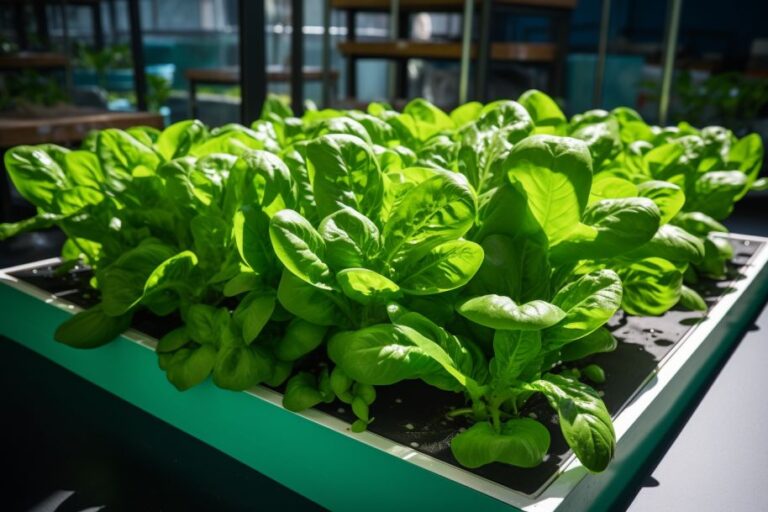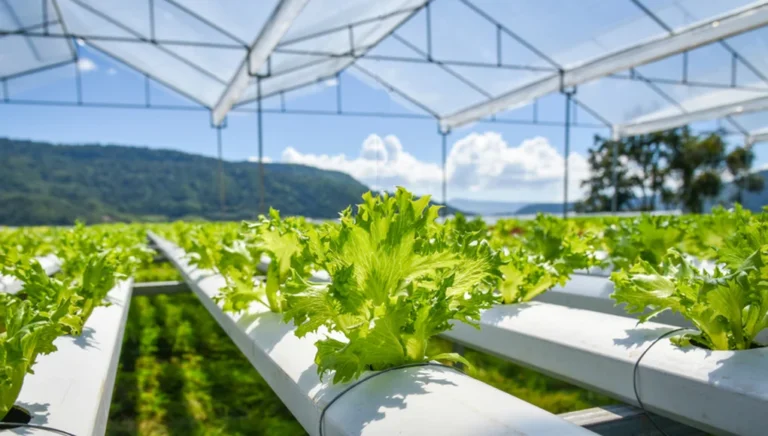How to Boost Your Hydroponic Growth with Organic Nutrients and the Kratky Method
Table of Contents
Understanding the Benefits of Organic Nutrients in Hydroponic Growth
Organic nutrients have been gaining popularity among hydroponic gardeners due to their numerous benefits in promoting optimal plant growth. Unlike synthetic nutrients, which are chemically derived, organic nutrients are derived from natural sources such as plant and animal matter. One of the key advantages of using organic nutrients in hydroponic systems is the enhanced bioavailability of essential elements to plants. Organic nutrients contain complex compounds that gradually break down, releasing nutrients in a slow and controlled manner. This allows plants to absorb the nutrients more efficiently, resulting in improved nutrient uptake and overall plant health.
Furthermore, organic nutrients contribute to the overall health of the growing medium in hydroponic systems. In traditional soil-based gardening, organic matter is crucial for maintaining soil structure and providing a habitat for beneficial microorganisms. Similarly, in hydroponics, the organic nutrients contribute to the overall richness and stability of the nutrient solution. This creates a favorable environment for beneficial bacteria and fungi, which play a vital role in nutrient cycling and disease suppression.
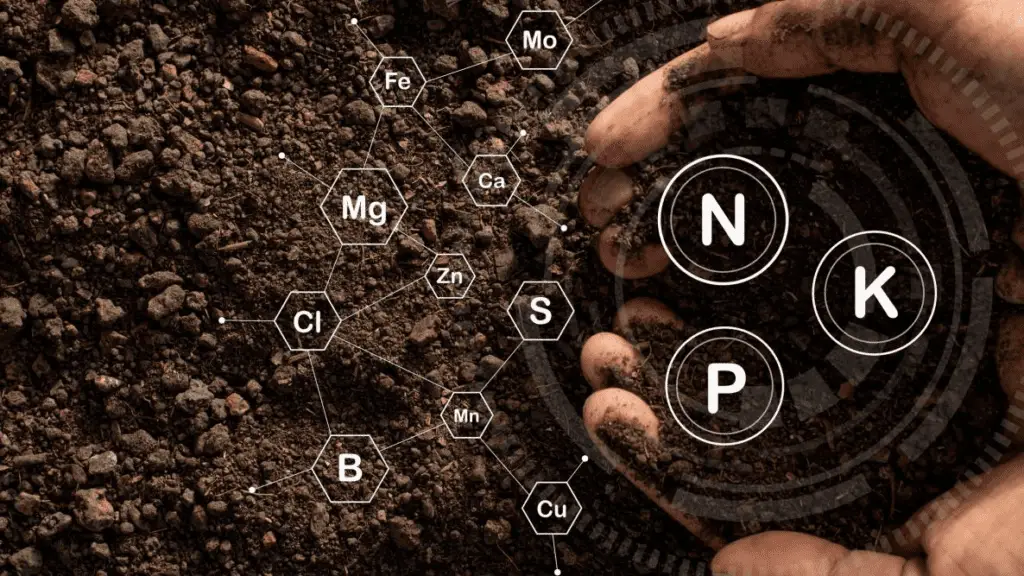
In addition to these benefits, organic nutrients also have a positive impact on the environment. Unlike synthetic nutrients, organic nutrients do not contribute to water pollution when properly managed. They naturally decompose without leaving behind harmful residues or excess nutrients that can leach into water sources. By choosing organic nutrients, hydroponic gardeners can prioritize sustainability and minimize their ecological footprint.
Exploring the Kratky Method: A Simple and Effective Hydroponic Technique
The Kratky method is gaining popularity among hydroponic enthusiasts for its simplicity and effectiveness in growing plants without the need for pumps, electricity, or constant monitoring. Developed by Dr. Bernard Kratky at the University of Hawaii, this innovative technique allows plants to thrive in a passive hydroponic system.
The key principle of the Kratky method lies in maintaining a stable water level while gradually exposing the roots to air as the nutrient solution is consumed. By using a container with a water reservoir and a floating platform to hold the plants, the roots can develop and absorb oxygen from the air in the container. This unique feature eliminates the need for continuous aeration and also prevents the risk of root rot.

This low-maintenance approach is ideal for beginners and those with limited space or resources. With the Kratky method, you can grow a variety of plants, including leafy greens, herbs, and even some fruiting crops. By understanding the fundamental principles and implementing the necessary steps, you can embark on a successful hydroponic gardening journey with the Kratky method.
Choosing the Right Organic Nutrients for Your Hydroponic System
When it comes to choosing the right organic nutrients for your hydroponic system, there are a few key factors to consider. First and foremost, it’s important to understand the specific needs of your plants and how different nutrients can benefit their growth.
One important aspect to consider is the nutrient ratio. Different plants require different ratios of macronutrients such as nitrogen, phosphorus, and potassium. For example, leafy greens like lettuce and spinach typically require higher levels of nitrogen for optimal growth, while fruiting plants like tomatoes and peppers benefit from higher levels of phosphorus and potassium. Understanding these nutrient ratios will help ensure that your plants receive the right balance of nutrients for healthy and productive growth.
In addition to nutrient ratio, it’s also important to consider the quality and source of the organic nutrients. Look for products that are certified organic and derived from natural sources such as seaweed, fish emulsion, or compost. These organic nutrients not only provide essential minerals for plant growth, but they also help improve soil health and microbial activity in your hydroponic system.
By carefully considering the nutrient ratio and quality of your organic nutrients, you can choose the right products that align with the specific needs of your plants, promoting healthy growth and maximizing yields in your hydroponic system.
Essential Nutrients for Optimal Hydroponic Growth
In order for hydroponic plants to thrive and achieve optimal growth, it is crucial to provide them with a balanced and sufficient supply of essential nutrients. These nutrients are necessary for various physiological functions and play a vital role in promoting healthy plant development. Let’s take a closer look at the key essential nutrients needed for optimal hydroponic growth.
First and foremost, nitrogen (N) is a fundamental nutrient required for the production of proteins, enzymes, and chlorophyll. It is responsible for the overall growth and lush green color of plants. Phosphorus (P) is another essential nutrient that supports the development of strong root systems, promotes flowering, and aids in energy transfer within the plant. Potassium (K) is vital for regulating water and nutrient uptake, enhancing disease resistance, and improving overall plant vigor.
Additionally, hydroponic plants require essential macronutrients such as calcium (Ca), magnesium (Mg), and sulfur (S). Calcium is crucial for cell wall formation and strengthening, as well as improving nutrient absorption and root development. Magnesium is a central component of chlorophyll and is involved in photosynthesis, while sulfur plays a role in protein synthesis and enzyme activation. These macronutrients work in harmony to support the structural integrity and metabolic processes of hydroponic plants.

Furthermore, micronutrients are essential for hydroponic growth, albeit in smaller quantities. Iron (Fe), manganese (Mn), zinc (Zn), copper (Cu), molybdenum (Mo), boron (B), and chlorine (Cl) are all micronutrients that play crucial roles in enzyme activation, photosynthesis, and various physiological functions. While required in smaller amounts, their absence or deficiency can lead to significant growth issues and yield reductions.
Properly supplying hydroponic plants with the right balance of essential nutrients is crucial for achieving optimal growth and maximizing yield. Through careful monitoring and adjustment of nutrient solutions, gardeners can provide their plants with the necessary elements for thriving in a soilless hydroponic system. Stay tuned as we delve deeper into the role of macronutrients and micronutrients in hydroponic systems to further enhance your understanding of optimal plant nutrition.
Understanding the Role of Macronutrients in Hydroponic Systems
Macronutrients play a vital role in hydroponic systems as they are essential for plant growth and development. These nutrients, which include nitrogen, phosphorus, and potassium, are required in large quantities and are responsible for various key functions in plants.
Nitrogen, often represented by the chemical symbol N, is crucial for the production of proteins and chlorophyll, which are essential components for plant structure and photosynthesis. It supports the growth of foliage and promotes lush, green leaves. Phosphorus, represented by the symbol P, is involved in energy transfer and storage, as well as root development and flowering. It plays a key role in processes such as DNA formation and cell division. Lastly, potassium, symbolized by K, helps regulate water balance, assists in enzyme activation, and supports overall plant vigor and disease resistance. These macronutrients must be provided in adequate amounts to ensure optimal plant health and growth in hydroponic systems.
The Importance of Micronutrients in Hydroponic Plant Nutrition
Micronutrients play a vital role in hydroponic plant nutrition, contributing to the overall growth and health of plants. While macronutrients such as nitrogen, phosphorus, and potassium are often emphasized in hydroponic systems, micronutrients should not be overlooked. These essential elements, required in smaller quantities, are just as important in promoting optimal plant development.
Micronutrients, also known as trace elements, include a range of elements such as boron, copper, iron, manganese, molybdenum, and zinc. Despite being needed in only small amounts, micronutrients are crucial for various physiological processes within plants. For instance, iron is essential for chlorophyll synthesis and energy transfer, while zinc is involved in enzyme activity and protein synthesis. Insufficient levels of micronutrients can lead to deficiencies, resulting in stunted growth, yellowing leaves, and reduced overall plant vigor.

To ensure that your hydroponic plants receive adequate micronutrient supply, it is crucial to closely monitor their levels and provide appropriate supplementation when necessary. Implementing a balanced nutrient solution with the right ratio of macronutrients and micronutrients is vital for sustaining healthy plant growth and preventing deficiencies. Regular testing of nutrient solution parameters, such as pH and electrical conductivity, can help optimize conditions and ensure the availability of micronutrients for your plants.
Implementing the Kratky Method: Step-by-Step Guide for Beginners
The Kratky method is a simple and effective hydroponic technique that requires minimal equipment and maintenance, making it ideal for beginners. This method utilizes the principles of passive hydroponics, eliminating the need for pumps or electricity. The key to implementing the Kratky method successfully lies in understanding the step-by-step process.
1. Choose the right container: Select a container such as a bucket or a reservoir that is lightproof and can hold an adequate amount of nutrient solution for your plants.
2. Prepare the growing medium: Use an inert growing medium, such as perlite or vermiculite, to anchor the plants and provide them with stability.
3. Mix the nutrient solution: Dilute the appropriate organic nutrients in water according to the specific requirements of your plants. It is crucial to use high-quality organic nutrients to ensure optimal growth and nutrition.
4. Adjust the pH level: Measure the pH level of the nutrient solution using a pH testing kit. Aim for a pH between 5.5 and 6.5, as this range is optimal for nutrient absorption.
Remember, the Kratky method relies on the principle of water level reduction over time, allowing the plants to draw in the nutrients as they grow. By following these steps and ensuring proper care of your hydroponic system, you will be on your way to a successful and rewarding Kratky method experience. Stay tuned for the next section, where we will explore the importance of maintaining proper pH levels in your hydroponic system, a crucial factor for successful plant growth.
Maintaining Proper pH Levels in Your Hydroponic System
Maintaining proper pH levels is crucial for the success of your hydroponic system. pH refers to the acidity or alkalinity of the nutrient solution, and it directly affects the availability of essential nutrients to your plants. Most hydroponic crops thrive in a pH range of 5.5 to 6.5, which is slightly acidic to neutral.
To maintain the ideal pH in your hydroponic system, regular monitoring is key. Use a reliable pH meter or test kit to measure the pH of your nutrient solution at least once a week. Adjust the pH as needed by adding pH up (alkaline) or pH down (acidic) solutions. It is important to make gradual adjustments, as rapid pH changes can shock your plants and hinder their growth.
| Aspect | Importance | Recommended Range | Monitoring and Adjusting |
|---|---|---|---|
| pH Level | Critical for nutrient uptake | 5.5 to 6.5 (General) | Regularly measure pH using a reliable pH meter. Adjust using pH up or pH down solutions. Aim for stability. |
| pH Fluctuations | Stability is key | Minimal fluctuations | Check pH daily and make small adjustments as needed. Avoid sudden and large changes to prevent stress on plants. |
| Nutrient Availability | pH affects nutrient solubility | Optimal pH for each nutrient | Understand the pH preferences of specific nutrients. Adjust pH to ensure optimal availability for plant uptake. |
| pH Monitoring Tools | Accurate tools are essential | pH meter, pH test kit | Invest in a quality pH meter for accurate readings. Regularly calibrate the meter to maintain precision in measurements. |
| Adjusting Solutions | pH Up and pH Down | Balanced and compatible | Use pH up or pH down solutions cautiously. Follow product instructions and make gradual adjustments to avoid overshooting. |
| pH Buffering | Maintain a stable buffer capacity | Use buffering agents | Incorporate buffering agents to help stabilize pH levels and prevent rapid changes. Follow recommended dosages for effectiveness. |
| Flushing System | Periodic system flush | Regularly, as needed | Flush the system with pH-balanced water to remove excess salts and reset pH. Monitor plant response for signs of improvement. |
One common factor that affects pH levels in hydroponic systems is nutrient uptake and assimilation by the plants. As plants utilize nutrients, they release hydrogen ions into the solution, causing a drop in pH. To counteract this, you can periodically flush your system with fresh water to remove any build-up of acidic ions. Regular system maintenance and proper nutrient dosing will also help prevent pH fluctuations. Remember, maintaining a stable pH is crucial for nutrient availability and optimal plant growth in your hydroponic system.
• Regularly monitor the pH of your nutrient solution using a reliable pH meter or test kit.
• Adjust the pH as needed by adding pH up (alkaline) or pH down (acidic) solutions.
• Make gradual adjustments to avoid shocking your plants and hindering their growth.
• Flush your system periodically with fresh water to remove any build-up of acidic ions caused by nutrient uptake and assimilation by plants.
• Perform regular system maintenance and ensure proper nutrient dosing to prevent pH fluctuations.
• Remember that maintaining a stable pH is crucial for optimal plant growth and nutrient availability in your hydroponic system.
Balancing Nutrient Solution Concentrations for Maximum Growth
Maintaining the right balance of nutrient solution concentrations is crucial for achieving maximum growth in your hydroponic system. It is essential to provide your plants with the optimal amounts of essential macronutrients and micronutrients, ensuring that they have everything they need to thrive.
To achieve this balance, start by understanding the specific nutrient requirements of the plants you are growing. Different plants have varying needs for nutrients such as nitrogen, phosphorus, potassium, calcium, magnesium, and trace elements. By knowing these requirements, you can adjust the nutrient solution concentration accordingly, providing your plants with the ideal levels of nutrients.
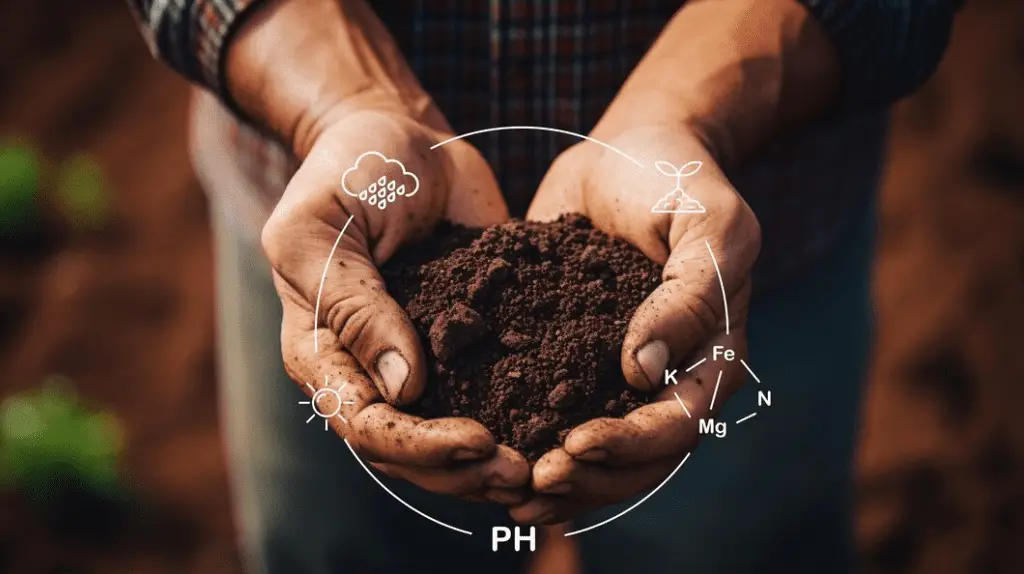
Regular monitoring of the nutrient solution’s electrical conductivity (EC) can help you maintain the right balance. EC meters are readily available and provide a quick and accurate measurement of the solution’s nutrient levels. Keep in mind that the optimal EC levels may vary throughout different growth stages and plant species, so it is important to refer to reliable resources or consult with experts to ensure you are providing the correct concentrations.
Remember that striking the perfect balance can take some experimentation and adjustments. It’s important to keep track of any changes you make to the nutrient solution concentrations and the resulting impact on plant growth. By carefully monitoring and balancing nutrient solution concentrations, you can optimize your hydroponic system for maximum growth and yield.
Troubleshooting Common Issues in Hydroponic Growth with Organic Nutrients
When it comes to hydroponic growth with organic nutrients, it’s important to be aware of common issues that gardeners may encounter. One common problem is nutrient deficiency, which can lead to stunted growth, yellowing leaves, and poor overall plant health. This can occur when the nutrient solution does not contain enough of the essential macronutrients and micronutrients that plants need for optimal growth. To address this issue, it’s important to regularly test the nutrient solution and adjust the concentrations as needed. Adding a balanced organic nutrient supplement can also help provide any missing nutrients and promote healthier, more vigorous growth.
| Issue | Possible Causes | Troubleshooting |
|---|---|---|
| Nutrient Deficiency | Insufficient organic nutrients | 1. Check nutrient concentration. |
| Imbalanced ratios | 2. Adjust ratios according to plant needs. | |
| Poor nutrient absorption (pH imbalance) | 3. Monitor and adjust pH levels. | |
| Algae Growth | Excessive light exposure | 1. Shield reservoir from direct light. |
| High nutrient levels and organic matter | 2. Reduce nutrient concentration. | |
| Root Rot | Poor oxygenation | 1. Ensure proper aeration. |
| Contaminated nutrient solution | 2. Change solution, sterilize system. | |
| High humidity, poor drainage | 3. Improve drainage, control humidity. | |
| pH Fluctuations | Alkaline or acidic organic nutrients | 1. Choose nutrients with balanced pH. |
| Poor pH monitoring and adjustment | 2. Regularly monitor, adjust pH as needed. | |
| Poor Plant Growth | Inadequate organic nutrient supply | 1. Increase nutrient concentration if needed. |
| Environmental factors (light, temp, humidity) | 2. Optimize conditions for plant growth. | |
| Root issues (rot, diseases) | 3. Inspect roots, treat any issues found. |
Another common issue in hydroponic growth with organic nutrients is nutrient toxicity. This occurs when the nutrient solution becomes too concentrated, leading to an overabundance of certain minerals and elements. Symptoms of nutrient toxicity can include leaf burn, root damage, and reduced plant productivity. To prevent this problem, it’s crucial to carefully measure and control the nutrient concentrations in the solution. Regularly monitor the electrical conductivity (EC) and pH levels of the nutrient solution to ensure they are within the optimal range for plant uptake. If nutrient toxicity is detected, it’s important to immediately dilute the nutrient solution with fresh water to bring the concentrations back to a safe level. By addressing these common issues, gardeners can ensure that their hydroponic systems are providing the necessary organic nutrients for healthy and productive plant growth.
Preventing Nutrient Deficiencies and Toxicities in Your Hydroponic System
To ensure successful hydroponic growth, it is crucial to prevent nutrient deficiencies and toxicities in your system. Nutrient imbalances can have detrimental effects on plants, leading to stunted growth, decreased yields, and even plant death. By understanding the key factors that contribute to nutrient imbalances and taking proactive measures, you can maintain a healthy and thriving hydroponic garden.
One of the primary causes of nutrient deficiencies and toxicities is an improper balance of the nutrient solution. It is essential to monitor and adjust the concentrations of essential nutrients regularly. Overdosing or underdosing nutrients can disrupt the delicate equilibrium and harm plant health. Conducting regular water and nutrient solution analysis can help you optimize nutrient levels according to your specific plant requirements. Additionally, investing in a reliable nutrient monitoring system can provide accurate data on nutrient levels and alert you to any imbalances before they escalate into more significant issues.
Another critical aspect to address is pH levels. The pH level of the nutrient solution plays a vital role in nutrient availability to plants. Deviations from the optimal pH range can hinder nutrient uptake and lead to deficiencies or toxicities. Regularly testing and adjusting the pH of your hydroponic system is necessary to ensure optimal nutrient absorption and prevent imbalances. Use pH adjustment solutions to bring the pH within the recommended range for your plants, typically between 5.5 and 6.5 for most crops.
Preventing nutrient deficiencies and toxicities involves continuous monitoring and proactive management of your hydroponic system. By carefully monitoring nutrient levels, adjusting concentrations accordingly, and maintaining proper pH levels, you can ensure the optimal health and productivity of your hydroponic garden. In the next section, we will explore the various organic supplements and additives that can enhance plant growth and further maximize yield and quality in hydroponics.
Enhancing Plant Growth with Organic Supplements and Additives
One of the keys to successful hydroponic gardening is providing plants with the necessary nutrients for optimal growth. While a well-balanced nutrient solution is essential, there are additional ways to enhance plant growth using organic supplements and additives. These organic products can provide plants with specific nutrients, boost their immune systems, and improve overall plant health.
One popular organic supplement used in hydroponics is seaweed extract. Seaweed is rich in trace elements, minerals, and growth hormones that stimulate root development, increase nutrient uptake, and promote vigorous growth. By incorporating seaweed extract into your hydroponic system, you can enhance nutrient absorption, improve resistance to diseases and pests, and ultimately increase your crop yield.
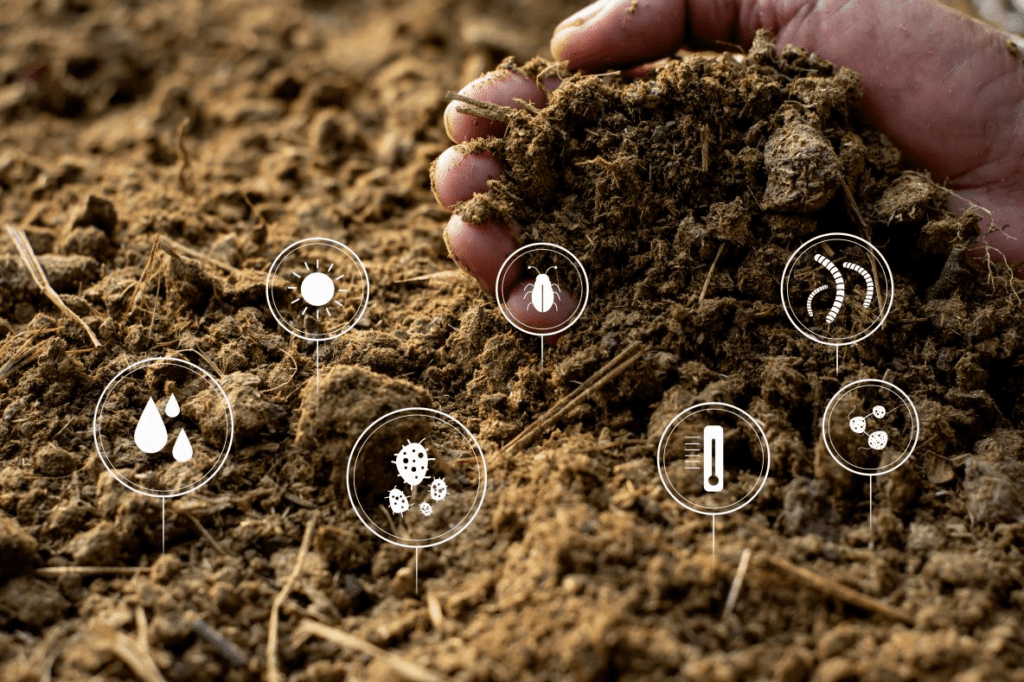
Another beneficial organic additive is humic acid, derived from decomposed plant and animal matter. Humic acid enhances the nutrient-holding capacity of the growing medium, ensuring that plants have a constant supply of vital elements. It also promotes root development, improves soil structure, and increases nutrient uptake efficiency. By including humic acid in your hydroponic system, you can enhance the overall nutrient availability, leading to healthier and more robust plants.
Incorporating these organic supplements and additives into your hydroponic system can significantly enhance plant growth and overall crop productivity. By providing plants with targeted nutrients and boosting their immune systems, you can create an optimal environment for their development. However, it’s important to note that organic supplements and additives should be used in moderation and according to the manufacturer’s instructions to prevent nutrient imbalances or toxicities.
Maximizing Yield and Quality with the Kratky Method and Organic Nutrients
The Kratky Method is a popular hydroponic technique that offers a simple and effective way to maximize yield and quality in your gardening endeavors. By utilizing organic nutrients in combination with this method, you can enhance plant growth and achieve impressive results.
One of the key benefits of the Kratky Method is its ability to create a self-sustaining environment for your plants. With this technique, the nutrient solution is only provided to the plants at the beginning of the growth cycle. As the plants consume the nutrients and the water level decreases, air is introduced into the system, creating an oxygen-rich environment. This oxygenation stimulates root growth and allows for efficient nutrient uptake, leading to healthier and more robust plants.
When it comes to choosing the right organic nutrients for your Kratky Method setup, it is important to consider the specific needs of your plants. Different crops require varying levels of macronutrients such as nitrogen, phosphorus, and potassium, as well as essential micronutrients like iron, zinc, and manganese. It is crucial to provide a well-balanced nutrient solution that meets these requirements to ensure optimal growth and development.
In the next section, we will delve deeper into the role of macronutrients and micronutrients in hydroponic systems, explaining their importance and how they influence plant growth. We will also provide practical tips and guidelines for maintaining proper pH levels and balancing nutrient solution concentrations, as these factors play a crucial role in maximizing yield and quality. Stay tuned for our comprehensive guide to troubleshooting common issues in hydroponic growth with organic nutrients.
Tips and Tricks for Successful Hydroponic Gardening with Organic Nutrients
Successful hydroponic gardening with organic nutrients requires careful planning, monitoring, and attention to detail. Here are some tips and tricks to help you achieve optimal results in your hydroponic system.
1. Start with high-quality organic nutrients: Choosing the right organic nutrients is crucial for the health and growth of your plants. Look for products that are specifically formulated for hydroponic systems and have a balanced ratio of essential macronutrients (such as nitrogen, phosphorus, and potassium) and micronutrients (such as iron, zinc, and copper). Using organic nutrients not only reduces the risk of chemical buildup in your system but also promotes healthier and more sustainable plant growth.
2. Maintain proper pH levels: pH plays a significant role in nutrient availability to plants. Aim to keep the pH of your hydroponic solution within the optimal range for your crop, typically between 5.5 and 6.5. Regularly monitor and adjust the pH using pH test kits or meters. Acidic solutions can hinder nutrient uptake, while alkaline conditions can cause deficiencies. Maintaining the correct pH level ensures that the plants can absorb the nutrients they need to thrive.
Remember, these are just a few tips to get you started on your hydroponic gardening journey with organic nutrients. Stay tuned for more in-depth information on nutrient solutions, pest management, and maximizing yields with the Kratky method and organic supplements. With the right knowledge and techniques, you can achieve successful and sustainable hydroponic growth for your plants. Happy gardening!
Expanding Your Knowledge: Additional Resources for Hydroponic Growth and Organic Nutrients
When it comes to expanding your knowledge on hydroponic growth and organic nutrients, there are several valuable resources available that can help you deepen your understanding and improve your gardening skills.
One excellent resource is the Hydroponic Society, a leading organization dedicated to promoting hydroponic gardening and providing educational resources. Their website offers a wealth of information on various hydroponic techniques, nutrient solutions, and troubleshooting tips. They also host webinars and workshops, allowing you to learn directly from experienced experts in the field.
Another valuable resource is the Journal of Hydroponic Research, a peer-reviewed publication that focuses on the latest advancements and research in hydroponic agriculture. Reading articles from this journal will not only keep you up to date with the latest trends and innovations in the field, but also provide you with evidence-based information to enhance your hydroponic practices.
In addition to these resources, there are numerous online forums and communities where hydroponic enthusiasts share their experiences, exchange ideas, and provide support. Websites such as Hydroponics Online and the Hydroponic Gardening Forum are great places to connect with fellow growers, ask questions, and gain insights from their experiences.
By exploring these additional resources, you can further deepen your knowledge on hydroponic growth and organic nutrients, empowering you to take your gardening skills to new heights and achieve optimal results in your hydroponic endeavors. So, why not dive in and unlock a wealth of valuable information that can fuel your passion for hydroponics?
What are the benefits of using organic nutrients in hydroponic growth?
Organic nutrients promote healthier plant growth, enhance nutrient absorption, improve soil structure, and reduce the risk of chemical residues in crops.
Can you explain the Kratky Method briefly?
The Kratky Method is a passive hydroponic technique that involves growing plants in a non-circulating nutrient solution. It is simple to implement and does not require electricity or expensive equipment.
How do I choose the right organic nutrients for my hydroponic system?
Consider the specific nutrient requirements of your plants, the quality of the nutrients, and the compatibility with your hydroponic system. Conduct research and read product labels to make an informed decision.
What are macronutrients, and why are they important in hydroponic systems?
Macronutrients are essential elements required in large quantities for plant growth. They include nitrogen, phosphorus, potassium, calcium, magnesium, and sulfur. They play a vital role in various physiological processes, such as photosynthesis and cell development.
What is the significance of micronutrients in hydroponic plant nutrition?
Micronutrients, such as iron, manganese, zinc, copper, boron, and molybdenum, are required in small amounts but are crucial for proper plant growth. They are involved in enzyme activation and other biochemical reactions.
How do I maintain proper pH levels in my hydroponic system?
Regularly monitor the pH of your nutrient solution using a pH meter or test kit. Adjust the pH using pH up or pH down solutions to maintain a suitable range for your plants, usually between 5.5 and 6.5.
How do I balance nutrient solution concentrations for optimal growth?
Measure the electrical conductivity (EC) of your nutrient solution using a conductivity meter. Adjust the concentration by diluting or adding nutrients until the desired EC level is achieved. Regular monitoring is essential to prevent nutrient imbalances.
What are some common issues in hydroponic growth with organic nutrients, and how can I troubleshoot them?
Common issues include nutrient deficiencies, pH fluctuations, algae growth, and root diseases. Troubleshoot these problems by adjusting nutrient levels, maintaining pH balance, using proper sterilization techniques, and implementing preventive measures.
How can I prevent nutrient deficiencies and toxicities in my hydroponic system?
Monitor your plants for signs of nutrient deficiencies or toxicities, such as yellowing leaves or stunted growth. Maintain a balanced nutrient solution, follow recommended dosages, and regularly test and adjust nutrient levels as needed.
Can organic supplements and additives enhance plant growth in hydroponics?
Yes, organic supplements and additives can provide additional nutrients, stimulate root development, improve plant resilience, and enhance overall growth and yield. However, use them judiciously and follow the manufacturer’s instructions.
How can I maximize yield and quality using the Kratky Method and organic nutrients?
Ensure that your nutrient solution is properly balanced, monitor pH and nutrient levels consistently, provide adequate lighting, maintain optimal temperature and humidity, and choose suitable plant varieties for the Kratky Method to achieve maximum yield and quality.
What are some tips and tricks for successful hydroponic gardening with organic nutrients?
Maintain a clean and sterile environment, avoid overfeeding your plants, provide adequate air circulation, choose high-quality organic nutrients, regularly monitor and adjust pH and nutrient levels, and stay informed about the specific needs of your plants.
Where can I find additional resources to expand my knowledge on hydroponic growth and organic nutrients?
You can explore books, online forums, research articles, university extension programs, and reputable websites dedicated to hydroponics and organic gardening for more in-depth information and guidance.

Pallavi Gupta is a burgeoning writer at SouthElMonteHydroponics, blending her passion for data analysis with a keen interest in biotechnology. Currently pursuing a Bachelor’s in Biotechnology at Amity University, Pallavi delves into the intricacies of life sciences while gaining hands-on experience in the exciting world of data analysis. Her unique background provides a fresh perspective on hydroponic farming, as she explores the intersection of biotechnology and sustainable agriculture. Through her writing, Pallavi aims to bridge the gap between data-driven insights and innovative farming practices, inspiring others to harness technology for a greener future.


